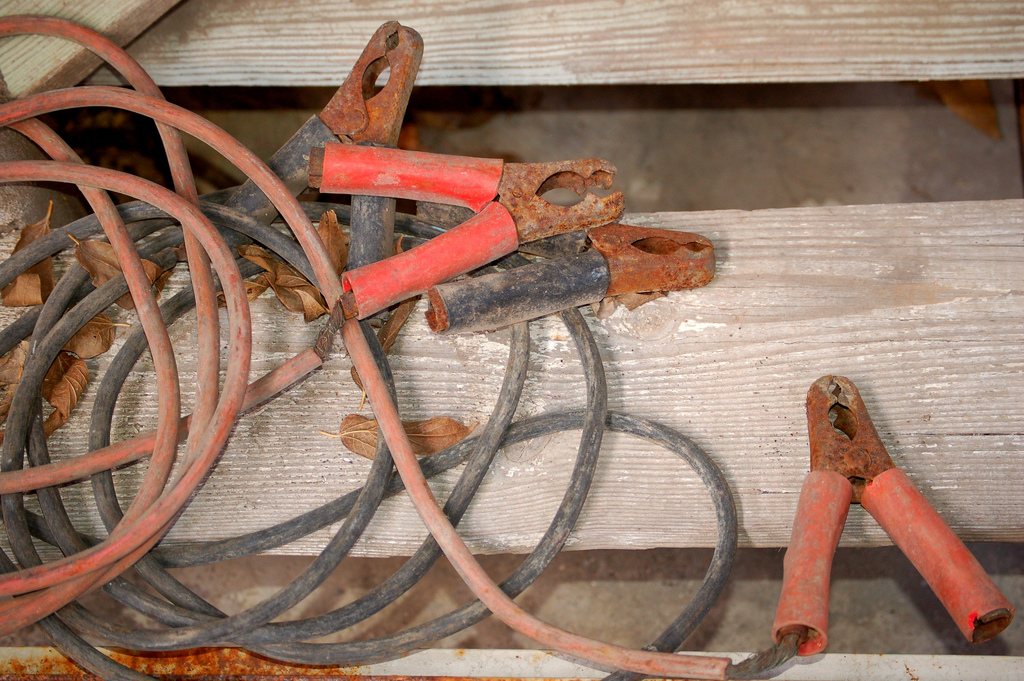Last Friday, as I was waiving goodbye to the family to head to work, I turned the key in the ignition. Nothing. No lights, no beeping sounds, nothing. After riding my bike all week, an open door drained the battery dead. So I hopped on my bike again and hoped it wouldn’t snow on my way home (it didn’t). After having several dead batteries over the years that just needed to be charged, I bought a battery charger. After plugging it in and hooking it up, I put it on the fast charge mode. The indicator LED flashed from red (charging) to green (full battery) so quickly that I thought my battery must be beyond repair, especially since the power meter also said it was 90% full of charge – clearly not the case. I clicked the switch over to the slow trickle-charge mode and decided to leave it while I went to do other things. It couldn’t hurt. A few hours later, I came back and the power meter now showed that the battery was only 20% charged. When I switched back to fast charge, it went into full gear (solid red) and started charging things up and left me with a fresh battery on Monday morning. After thinking through the initial state of the battery, which refused toddler-style, to take any charge, even pretending to be full, it struck me that things we want to change in life follow a similar pattern.
Often we know we need to work to charge up our life, whether it’s in our relationships, our reputation, or our work. We identify what we want to change and create some ideas that will try to fix it quickly, essentially applying the charger in fast-charge mode but instead of seeing things change, our world flashes charging for a moment, then all full. We feel frustrated since our grand act didn’t result in any noticeable difference. We push, it pushes back just as hard even though it’s clearly empty. Sometimes things are so empty, we need to start with a trickle charge, a small amount of pressure constantly applied over a longer period of time until there is enough opportunity to push into fast charge mode. Small things instead of big things. It’s counterintuitive because we know it needs to be different and we hope a grand flourish will change all that, but it won’t. On the plus side, it’s easier to supply smaller changes, but it’s harder to apply them consistently.
We should think about this when we find something we want to change. Is the situation ready for some grand change or should we instead gear up for making many small changes over a longer duration until we start seeing movement, and then ramp it up.

Leave a Reply